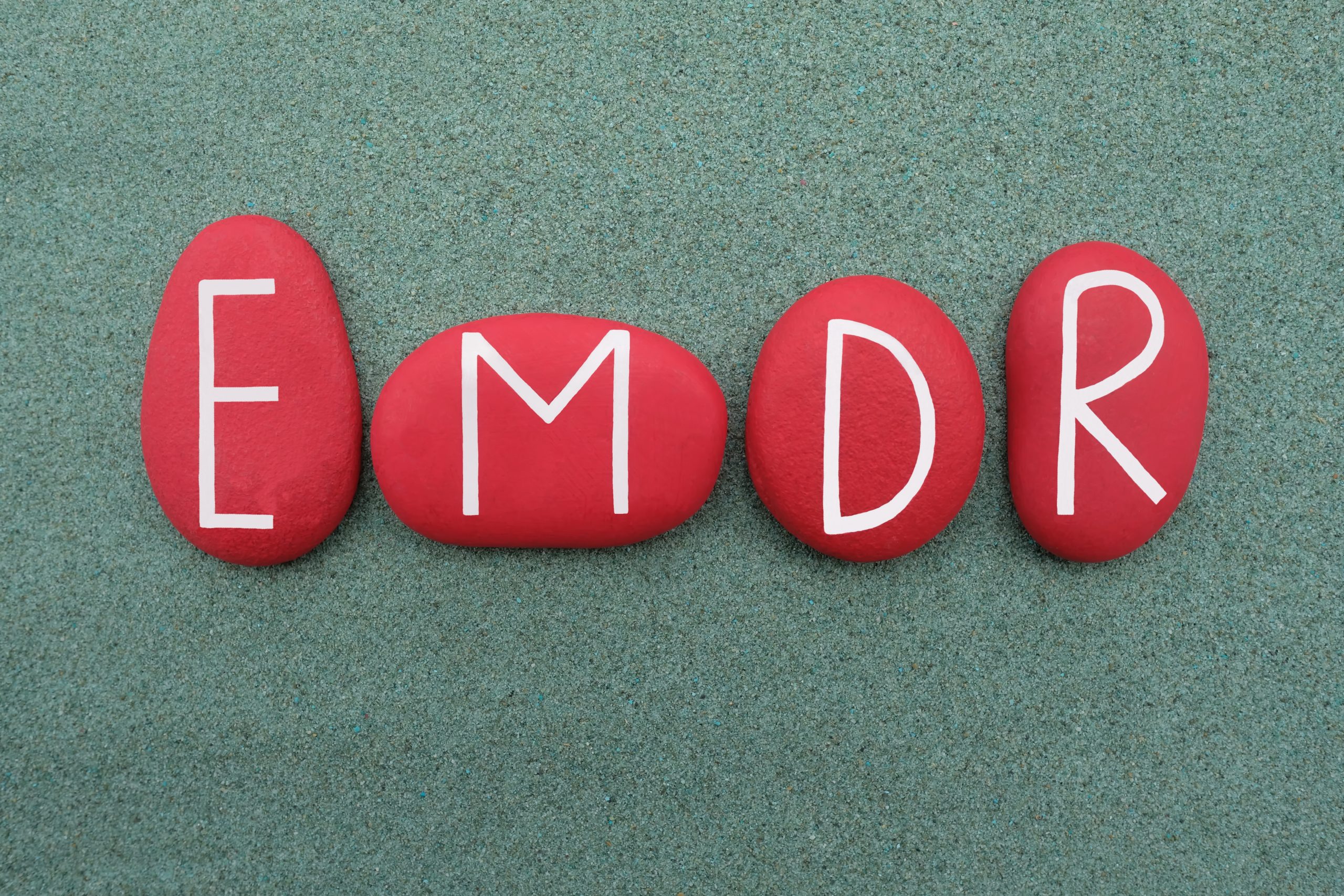
Do you ever wish you could go back in time to stop a traumatic event from happening to you? Does the memory from that event leave you feeling overwhelmed and stuck? Although we can’t manipulate time, there is a treatment that we here at Talking Works provide. It’s called EMDR Therapy and it aides you in moving past painful memories and feel less debilitating.
This article will explain what EMDR Therapy is and how it can help you heal.
Please note that many reputable organizations recognize EMDR Therapy as an effective treatment.
- American Psychiatric Association
- American Psychological Association
- International Society for Traumatic Stress Studies
- Substance Abuse and Mental Health Services Administration
- U.S. Dept. of Veterans Affairs/Dept. of Defense
- World Health Organization
Now, let’s answer some questions.
What is EMDR Therapy?
EMDR stands for Eye Movement Desensitization & Reprocessing (EMDR). It’s a rhythmic left-right (bilateral) stimulation psychotherapy used to reprocess painful memories. Think of it as a memory stuck in one part of your brain. If it can’t move to the processing side of your brain, your nervous system will react whenever that memory is triggered. The reason for that is because your brain and your nervous system naturally communicate. In this case, however, your brain can’t tell your nervous system that that traumatic event is over. It also can’t help you naturally calm down from the stress the memory is causing.
How does EMDR work?

EMDR Therapy helps shift traumatic memory stored in the brain through the use of eye movements. As a result, distressful symptoms reduce and your self image improves.
Sometimes your brain has trouble processing certain traumatic events. So much so, that it can mentally bring you back to the event. Therefore, when stress from a traumatic event remains the upsetting images, thoughts, and emotions can overwhelm you.
EMDR helps heal your brain’s processing power to allow you to move past the event more easily. The memory of the traumatic event remains, but the fight, flight, and freeze response resolves.
For example, let’s say you go for a swim in the ocean and encounter a shark. Your nervous system is going to respond upon seeing the shark. If you manage to escape, your brain stores the experience. Your nervous system can continue to respond if, for example, you think of going back in the ocean.
During the session, a trained EMDR Therapist will have you think about the memory. At the same time, you will move your eyes from left to right. The traumatic memory that was stored in your long-term memory now enters active memory. It’s important the memory is active because the eye movements help your brain properly process it.
After every session with your EMDR Therapist, the distressful symptoms begin to soothe. You will then be able to apply coping strategies to help you feel in control in the future.
What should you expect during your session?

Within the first few sessions, your therapist will get to know your history and specific issues you wish to target.
After choosing the memories, you’ll begin your eye movements by either following the therapist’s fingers or external device.
The reprocessing will take place and you may start to feel relaxed and a sense of relief. After each set of eye movements, you report the thoughts that came up. Your therapist then has you focus on those thoughts in the next set until you no longer feel distressed.
Your EMDR Therapist will focus on turning negative thoughts and feelings in positive beliefs. For example, if you were beaten by your parents as a child you may have a sense of being powerless. But with EMDR Therapy, your therapist will help you understand you are now strong. For instance, you will see you can make different choices as an adult versus when you were a child. If someone were to try and beat you now, then you have the power to do something.
The sessions will continue until your therapist has helped reduce or eliminate the intense symptoms from the traumatic memories.
What else can EMDR help with?
The great thing about EMDR Therapy is that it doesn’t just treat trauma. It was originally designed for trauma therapy by Dr. Francince Shapiro in 1987 but found its way into helping other non-trauma-related issues. It’s useful in treating various mental illnesses such as:
- Post Traumatic Stress Disorder (PTSD)
- Anxiety
- Depression
- Panic Disorders
- Addictions
- Chronic pain
- Eating disorders
- Panic disorder
- Phobias
- Sexual Assault
- Grief
EMDR Therapy can be implemented alongside Cognitive Behavioral Therapy (CBT) therapy and medications if your therapist and doctor deem it necessary.
How can I get started?
Call or text our office at (347) 391-4250 and we will schedule you with our NYC EMDR therapy specialist. Overcome trauma and live life.
